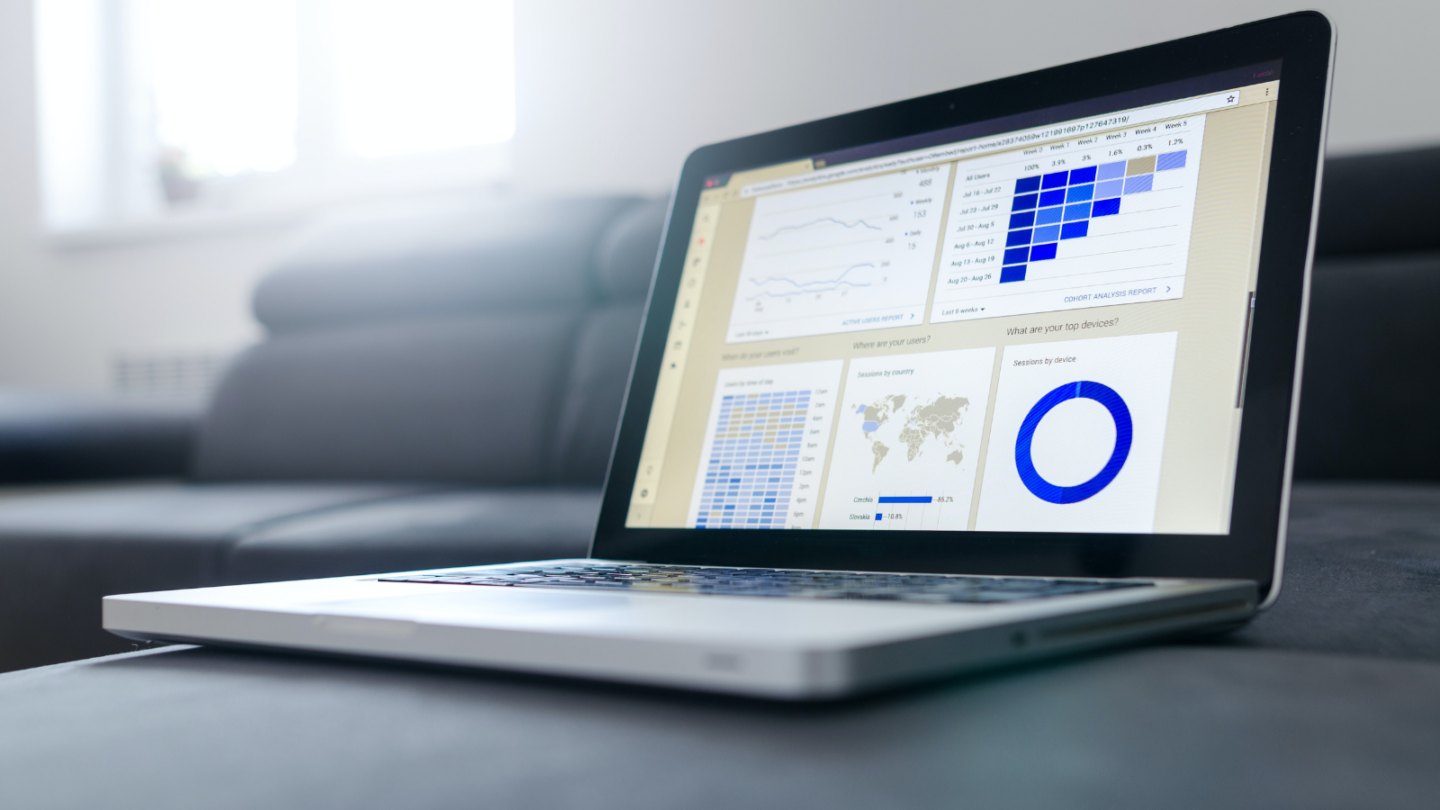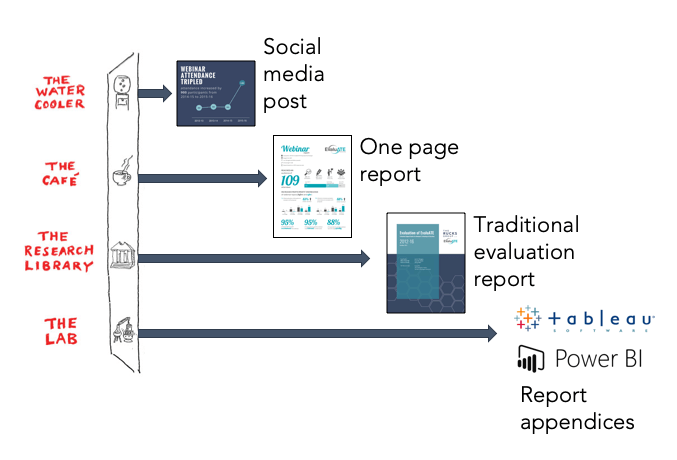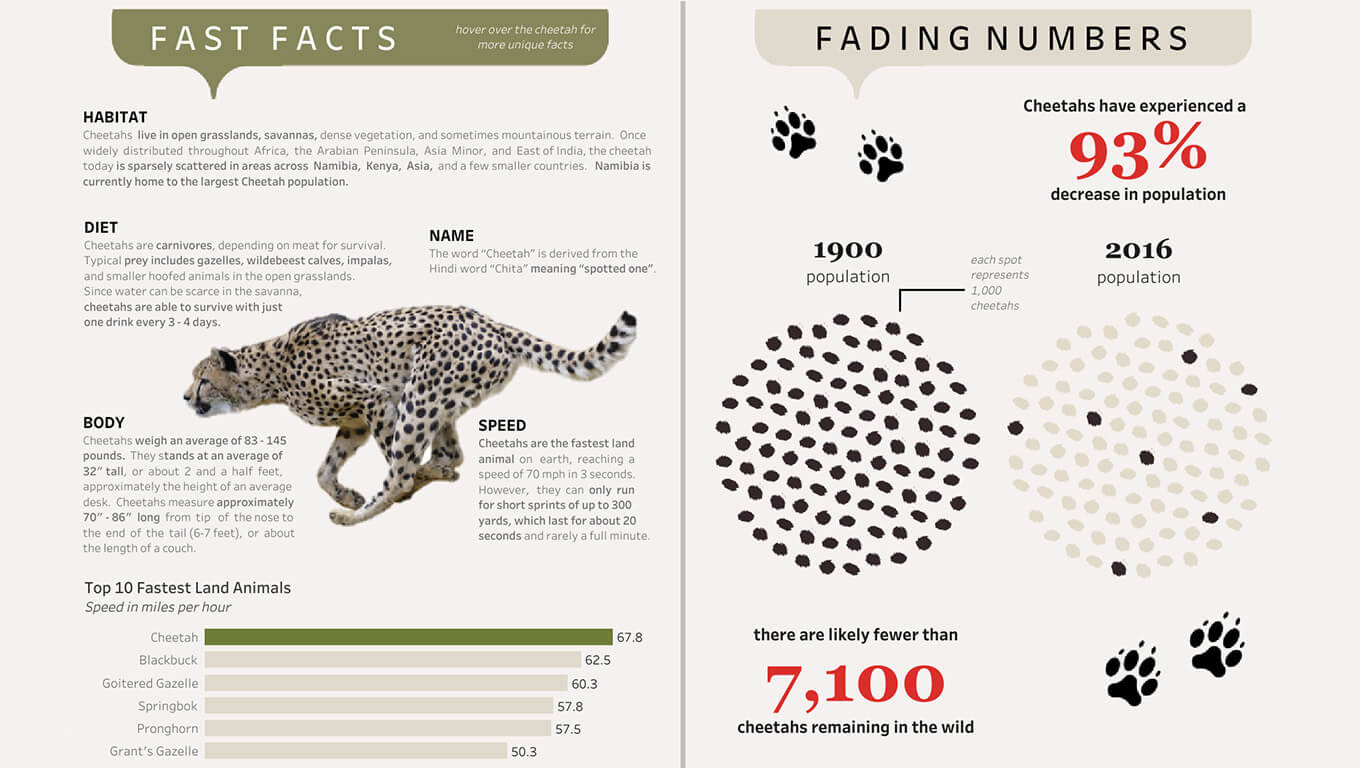
Evaluation reports take a lot of time to produce and are packed full of valuable information. To get the most out of your reports, think about “repackaging” your traditional report into smaller pieces.
Repackaging involves breaking up a long-form evaluation report into digestible pieces to target different audiences and their specific information needs. The goals of repackaging are to increase stakeholders’ engagement with evaluation findings, increase their understanding, and expand their use.
Let’s think about how we communicate data to various readers. Bill Shander from Beehive Media created the 4×4 Model for Knowledge Content, which illustrates different levels at which data can be communicated. We have adapted this model for use within the evaluation field. As you can see below, there are four levels, and each has a different type of deliverable associated with it. We are going to walk through these four levels and how an evaluation report can be broken up into digestible pieces for targeted audiences.

The first level, the Water Cooler, is for quick, easily digestible data pieces. The idea is to intrigue your viewer to want to learn more using a single piece of data from your report. Examples include a headline in a newspaper, a postcard, or social media post. In a social media post, you should include a graphic (photo or graph), a catchy title, and a link to the next communication level’s document. This information should be succinct and exciting. Use this level to catch the attention of readers who might not otherwise be invested in your project.

The Café level allows you to highlight three to five key pieces of data that you really want to share. A Café level deliverable is great for busy stakeholders who need to know detailed information but don’t have time to read a full report. Examples include one-page reports, a short PowerPoint deck, and short briefs. Make sure to include a link to your full evaluation report to encourage the reader to move on to the next communication level.

The Research Library is the level at which we find the traditional evaluation report. Deliverables at this level require the reader to have an interest in the topic and to spend a substantial amount of time to digest the information.

The Lab is the most intensive and involved level of data communication. Here, readers have a chance to interact with the data. This level goes beyond a static report and allows stakeholders to personalize the data for their interests. For those who have the knowledge and expertise in creating dashboards and interactive data, providing data at the Lab level is a great way to engage with your audience and allow the reader to manipulate the data to their needs.

We hope this blog has sparked some interest in the different ways an evaluation report can be repackaged. Different audiences have different information needs and different amounts of time to spend reviewing reports. We encourage both project staff and evaluators to consider who their intended audience is and what would be the best level to communicate their findings. Then use these ideas to create content specific for that audience.

Except where noted, all content on this website is licensed under a Creative Commons Attribution-NonCommercial-ShareAlike 4.0 International License.






 EvaluATE is supported by the National Science Foundation under grant numbers 0802245, 1204683, 1600992, and 1841783. Any opinions, findings, and conclusions or recommendations expressed on this site are those of the authors and do not necessarily reflect the views of the National Science Foundation.
EvaluATE is supported by the National Science Foundation under grant numbers 0802245, 1204683, 1600992, and 1841783. Any opinions, findings, and conclusions or recommendations expressed on this site are those of the authors and do not necessarily reflect the views of the National Science Foundation.